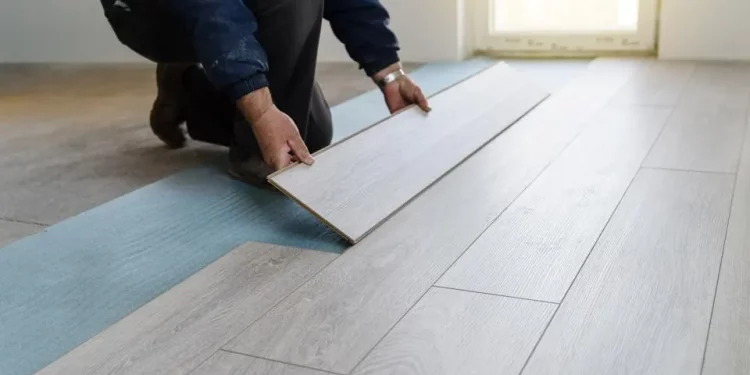Developers use various materials for house flooring, including tiling, smooth screeds, wooden floorboards, laminated panels, and vinyl boards. Laminated floors are increasingly popular due to their wood-like appearance, which gives rooms a unique and appealing feel.
Laminated flooring is a multilayer synthetic product fused together through a lamination process. The surface is a hard-plastic laminate with printed design layers that simulate wood, while the core is made of rigid fiberboard. The installation process is straightforward and does not require extensive skill.
After casting the slab and laying the screed uniformly, underlay foam is placed before laying the laminate flooring. The installation method, known as tongue and groove, is favorable because the planks can be removed without damaging the existing floor. Moreover, this system of installation is user-friendly for amateurs.
At internal doors where the laminate flooring transitions from one room to another, a plastic strip known as T-molding is placed parallel to the closed door. The T-molding is a plastic molding edging placed at the transition points between connecting laminate flooring planks of equal thickness.
The standard dimension of a strip is 2 inches wide and 5/8 inches high. A space of 3/8 inches is left on both sides of the transition of the T-molding as an expansion gap. Failure to leave this gap can cause the laminate flooring to warp or buckle over time. The T-molding is installed by applying construction adhesive tape at the center of the expansion gap, placing the strip, and pressing it down. The T-molding ensures a smooth transition between different rooms.
Laminate flooring is popular because it is more environmentally friendly compared to hardwood, as it is not made of real wood. Some of its shortcomings include poor sound absorption when people are walking and a high likelihood of being damaged by exposure to water or steam. However, its pros outweigh the cons in terms of environmental impact and cost.
Developers seek the most cost-effective methods for floor finishes while maintaining aesthetics and comfort. Factors that determine the flooring method used include the client’s preferences, aesthetics, and the overall costs of installation

















